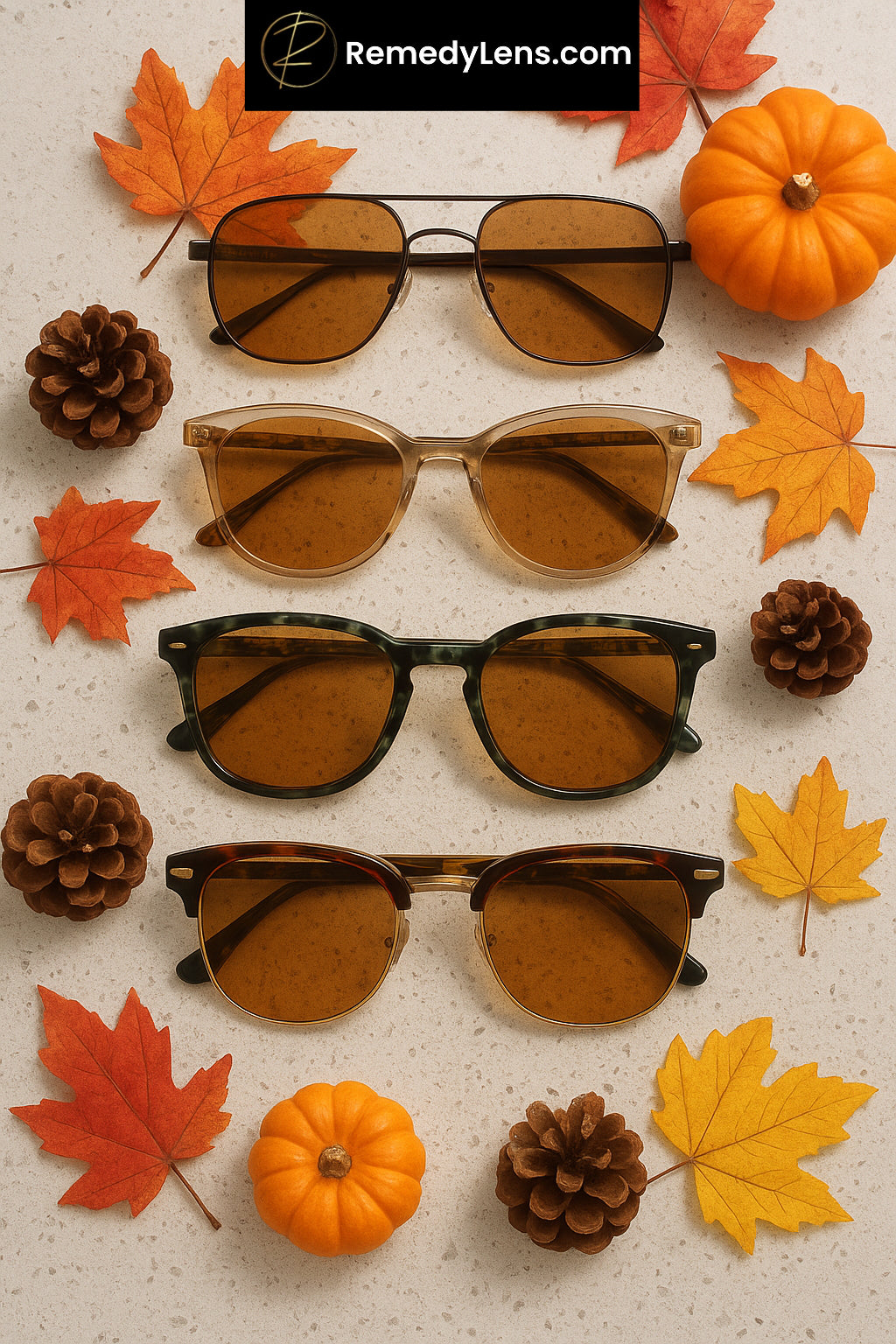
Why Migraines and Light Sensitivity Worsen in Autumn and Winter — and How FL-41 Lenses Can Help
Share
For many people living with migraine, the colder, darker months of the year don’t just bring a change in weather — they also bring a spike in symptoms. Photophobia (light sensitivity) and migraine attacks are often worse in autumn and winter, and there are good reasons for this seasonal flare-up. The good news is, simple tools like FL-41 tinted lenses can make these months much more manageable.
Why Migraine and Photophobia Are Worse in Autumn and Winter
1. Low Sun Angles and Glare
In autumn and winter, the sun sits lower in the sky. That means sunlight shines more directly into your eyes, especially during morning and evening commutes. Wet pavements, icy roads, and even snow can act like mirrors, reflecting harsh blue light that easily triggers migraine.
2. Harsher Artificial Lighting
Shorter days mean more time spent under fluorescent and LED lights, both at work and at home. These light sources often flicker imperceptibly and emit blue-green wavelengths that are especially aggravating for those with migraine and photophobia.
3. Weather and Barometric Pressure Changes
Autumn storms and winter cold fronts bring frequent shifts in air pressure — one of the most common environmental migraine triggers. Add in the dryness from indoor heating, and the body is under extra stress, raising the likelihood of an attack.
4. Disrupted Sleep and Circadian Rhythms
With less natural daylight, our internal clocks can get out of sync. Changes in melatonin and serotonin — key regulators of sleep and mood — are linked to migraine activity. Poor or irregular sleep can make light sensitivity worse.
5. Increased Screen Exposure
Dark evenings often lead to more time on computers, phones, and TVs. Prolonged exposure to digital screens, especially in dim surroundings, intensifies both eyestrain and migraine risk.
The Benefits of FL-41 Lenses in Autumn and Winter
FL-41 lenses are specially designed rose-tinted glasses that filter out the specific blue-green wavelengths of light most likely to trigger photophobia and migraine. Unlike standard blue light-blocking glasses, they have been studied for decades and consistently shown to reduce light sensitivity and migraine frequency.
Here’s why they’re especially useful in the colder seasons:
-
Reduce Glare from Low Sun and Snow
FL-41 lenses cut the sharp, painful glare caused by the low winter sun and reflective surfaces like snow and wet roads. -
Soften Harsh Indoor Lighting
Whether it’s fluorescent lights at the office or bright LEDs at home, FL-41 lenses help ease the visual discomfort that can tip over into migraine. -
Make Screens More Comfortable
Their targeted filter reduces the wavelengths that make screens so uncomfortable for migraine sufferers, without overly distorting colour. -
Support Mood and Daily Rhythm
By reducing migraine frequency and intensity, FL-41 lenses can indirectly help stabilise sleep patterns and mood — both of which are more vulnerable during the darker months.
Conclusion
Migraines and light sensitivity thrive on disruption — whether it’s the low sun angles, stormy weather, or increased exposure to artificial lighting that come with autumn and winter. Understanding these triggers can help you prepare, and choosing the right tools can make a real difference.
FL-41 lenses aren’t a cure, but for many they’re a powerful way to reduce seasonal migraine flare-ups, tame photophobia, and regain some comfort during the months when light feels most hostile.
If you’ve noticed your migraines get worse in autumn and winter, it might be the season to try FL-41 lenses — and see just how much relief they bring.
